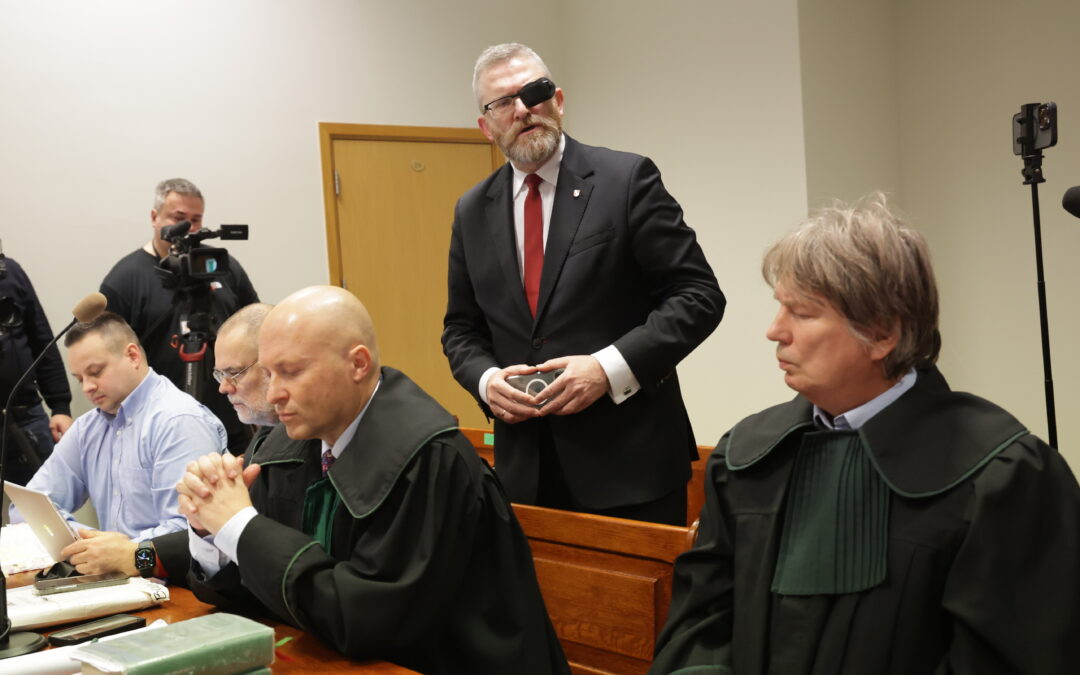An “amber rush” has taken place on Poland’s northern Baltic coast, after rumours that the construction of a canal had unearthed pieces of the precious material.
Dozens of people were pictured searching for amber on a beach in the village of Kąty Rybackie over the weekend. The news follows claims by fishermen last month that they had discovered pieces of amber whilst working nearby.
Bursztynowa gorączka na Przekopie Mierzei Wiślanej https://t.co/O53xP8OI0b przez @YouTube
— Andrzej Holinka "kobuz" (@HolinkaPis) May 9, 2021
The amber has allegedly been dislodged by dredgers excavating sand from the Vistula Spit, a narrow strip of land between the Vistula Lagoon and the Baltic Sea. The work is being undertaken as part of the construction of a controversial 1,300-metre canal across the spit.
The Baltic region is the world’s leading source of amber, with beaches in Poland often seeing crowds searching for the precious material, especially after storms. The Polish Geological Institute estimates that 5.5 tonnes of amber is discovered on the coast every year.
The material, which is made of fossilised tree resin, is prized for its colour and has been used to make jewellery and other objects since ancient times. The earliest traces of amber workshops in what is now Poland date back over 6,000 years. An amber amulet from 2500-2200 B.C was discovered at the Vistula Spit in 1982.
Poland’s ties with amber, known as ‘The Gold of the North’ or the ‘Gem of the Baltic’, have a long history – as early as the Neolithic period, humans were crafting objects out of amber on Polish soil.#ThisWeekOnCulturePL 👉 https://t.co/sc9RtESBOT pic.twitter.com/wz3Zoon5tB
— Culture.pl (@culture_pl) December 7, 2019
Experts suggest that pieces of amber weighing up to 200 grams may have been disturbed during recent construction work, reports Wirtualna Polska, with some lumps carried by the tides and deposited on beaches in the wider region.
“I have heard reports that 200-gram lumps were thrown from the dredger and the pipe transporting sand from the bottom – allegedly, the largest piece was the size of a loaf of bread,” said Tomasz Ołdziejewski, a local craftsman who works with amber.
“When the bottom of the ditch has been disturbed, the amber will move with the current and the sea will throw it onto the beach,” he added.
Over the weekend, local media reported that several dozen people – including individuals from as far away as Bielsko-Biała and Kraków in southern Poland – were searching for amber around Kąty Rybackie, using UV lights to spot the material and working with nets beneath a dredging pipe.
A similar situation occurred in 2019, when amber was dislodged during the dredging of Gdańsk port and discovered on beaches up to 20km away. The popularity of Polish amber prospecting has even sparked a TV series, Złoto Bałtyku (Baltic Gold), which follows the search for amber along the coast.
When the development of the Vistula Spit canal began, there were hopes that amber discovered during construction would help to partially offset the costs of the investment.
In July 2020, a deputy minister of state assets, Maciej Małecki, claimed that deposits at the site contained as much as 6.9 tonnes of amber, which had an estimated value of 138 million zloty (€30.3 million), reported Wprost. However, a month later, these estimates were revised down to 900 kg of extractable material.
In January, following an enquiry by a group of MPs, Poland’s chief geologist reported that in fact only 17kg of amber had so far been excavated and transferred to the state treasury during construction. The government now admits that the material is buried so deep that extraction would be unprofitable.
The Vistula Spit canal aims to cut 100 kilometres off the journey of ships heading to the Polish port of Elbląg, as well as enabling them to avoid passing through the Russian-controlled Strait of Baltiysk. The project has, however, raised a number of environmental concerns.
Main image credit: Telewizja Regionalna Żuławy TV/YouTube (screenshot)

Juliette Bretan is a freelance journalist covering Polish and Eastern European current affairs and culture. Her work has featured on the BBC World Service, and in CityMetric, The Independent, Ozy, New Eastern Europe and Culture.pl.




















